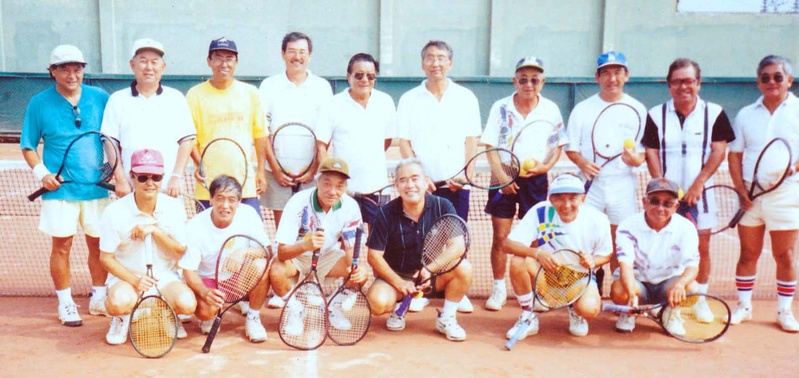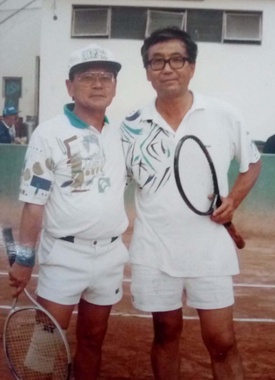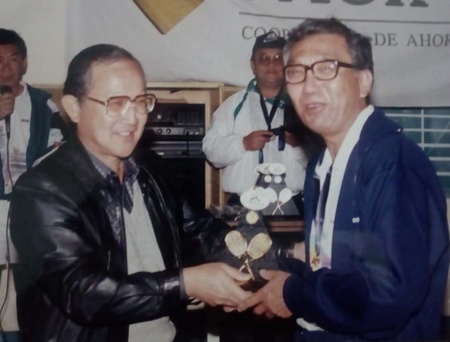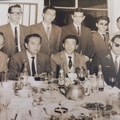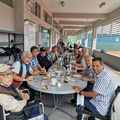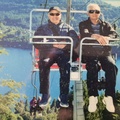Remember is to live again. Twenty years ago, he wrote a column in the newspaper Perú Shimpo called “Set point”, and he signed it as 'El Pibe'. My passion for tennis was at its peak and I had Mr. Mario Teves as support in the newspaper. This column was purely sports, Mario accepted all kinds of innovations from me. From highlighting names or news, to accepting certain aspects of humorous writing. The activities of our beloved institution had the appropriate corner to highlight all kinds of sporting, social, human and humorous events.
Today, I look out on my balcony and, in the nocturnal loneliness that the present pandemic makes us live, I feel that silence that captures the images that were lost with the passage of time, and I grope, in the semi-darkness, the immense value of the pine trees that, like a seal of human pilgrimage, climb with memories of the generations that go through the history of our beloved La Unión Stadium. Tennis, like all other sports, is nourished by anecdotes and they form a trail that someone will recount over time. A saved story.
Mine dates back just twenty-seven years, when, for the first time, I approached my children to practice playing rackets and balls on clay courts. The curious thing about it all was that I fell in love with their practice of straight sets and an atmosphere that I had rarely had in my life. A sport that until then had never been given the necessary importance or respect. A group of people made a total change in my life of living and getting along with people from different generations again. My children, who were the ones interested, did not return.
It was a March afternoon, of intense heat and I was 53 years old (today at the age of eighty, the almanacs in decline take a break for each generation that knew how to live together on the reddish courts of AELU Tennis). Memories, many forgotten, tend to emerge along the long path to enter that venue that, because of its small and cozy nature, was the favorite place for our social gatherings when, in sports clothes, we waited for the bell at the end of the games at five o'clock. courts, while the coffee and beer delighted us with their flavor.
In those years, founding members of the AELU and many isei who arrived as immigrants to Peru were still present. They joyfully practiced the sport of net and racket. They were the ones who welcomed me on afternoons of playing and were also my teachers at the beginning of my racket swings and runs to the net.
Today, I have reached the age of many of them and I see that in the wheel of life that it teaches us, almost all of them have left us the black crepe of farewell and memories. And those young people, who arrived with a certain timidity, are the ones who are close to retiring. Behind them come those who as children made us happy in the afternoons of our sporting laziness and surely, as my grandchildren pass by, they will make me see that life is a top, that spins and spins, and that in the end it loses its rotation and ends. comes to stop. We will all, at some point, come to think that life ends here.
In the summer of 1993 I was lucky enough to meet Julio Yamashiro. Years we didn't see each other, since the sixties. He was the person who introduced me to all the AELU Tennis players of those years. Julio had a tennis coaching course and little by little I got to know the most veteran players, with whom I played, lost and learned. I always remember Saburó Hanawa, Ernesto Ychikawa, Isao Naito, Luis Maeshiro, César Caballero, Kuanko Yha, Ricardo Takeda, José Akaogui, Kasuo Asato, Víctor Camacho, Julio Aniya, Ricardo and Luis Fukushima, Víctor Ykeda, Sergui Bankovaki and Hugo Ferro.
Variety and quality of play. From all of them, I learned a lot. Their knowledge enriched me and their people skills quickly made me feel that friendship was the center of all activity on the AELU tennis courts, as well as outside of it. Today, after so many years, and in the tranquility of this pandemic, I would like to pay a small tribute to all my tennis friends who have gone to eternity (in a second installment I will mention the ladies of AELU Tennis, a thousand apologies).
Of the aforementioned people, only Dr. Julio Aniya and José Akaogui accompany us, with “base eight” on the calendar. Pepito, with his accurate shot from the back of the court, still teaches us in every agreed upon match. And from our dear friend Julio Aniya we miss his “spoon” shot. Greetings, doctor.
Twenty-seven years in the AELU Tennis calendar. Its list of deceased is extensive and, without a doubt, many will not be there due to lack of information or perhaps because of the memory that one loses over the years: Luis Tamamoto, Arturo Kakutani, Manuel Kawashita, Juan Kobashikawa, Kuanko Yha, Mabito Saluray, Fermín Uehara, Augusto Ganiko, Jacinto Ono, Oswaldo Sifuentes, Teodoro Aragaki, Aurelio Nakasone, Pedro Arakaki, Enrique Fulleda, George Yto, Miguel Yonamine, Ángel Utsunomiya, Carlos Kudsuma, Jorge Rodríguez, Augusto Shigyo, Tito Ychikawa, Gonzalo Koo, Ricardo Akira Tokashiki, Pedro Aritomi, Jorge Tomo Chinen, Justo Rivera, Ricardo Mitsuya Higa, Máximo Hirano, Luis Pichón Tokashiki and Enrique Matayoshi. And they also give me the sad news about Carlitos Tagami.
I was fortunate to fraternize with all of them in the last three decades. Years of emotional memories and unforgettable moments, meetings of friends that became family motifs, those who, in a corner of the soul, still sleep the moments so precise that, being generous, the jugs of the different generations can flow with tears. Today, in solitude and on the road, the days feel generous again, like those moments, at the end of our games. I can only say that, on the journey of so many friends, few of us are left. Our generation is saying goodbye.
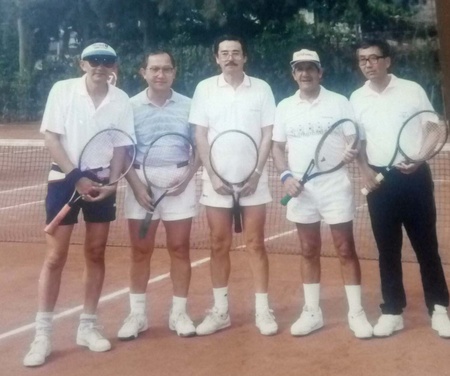
*This article adapted for Discover Nikkei and originally published for the Peru Shimpo newspaper on June 23, 2020.
© 2020 Luis Iguchi


